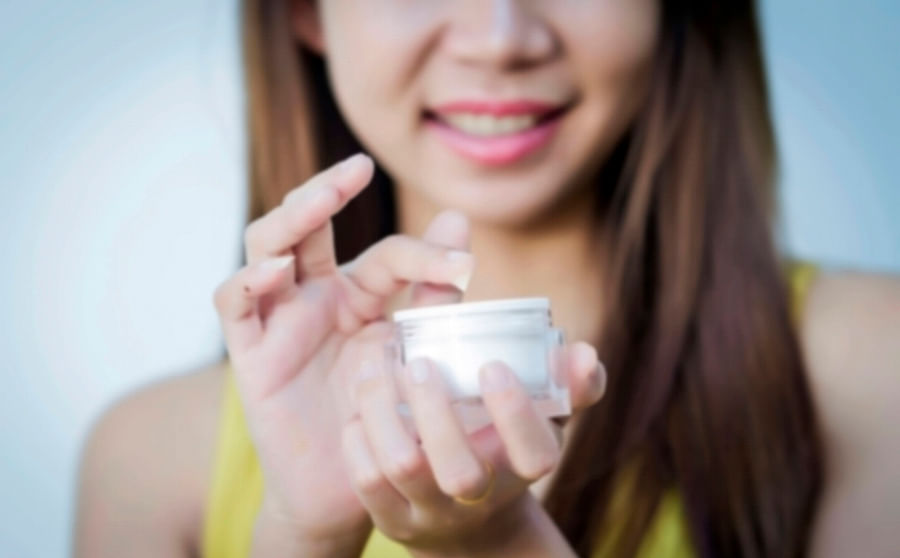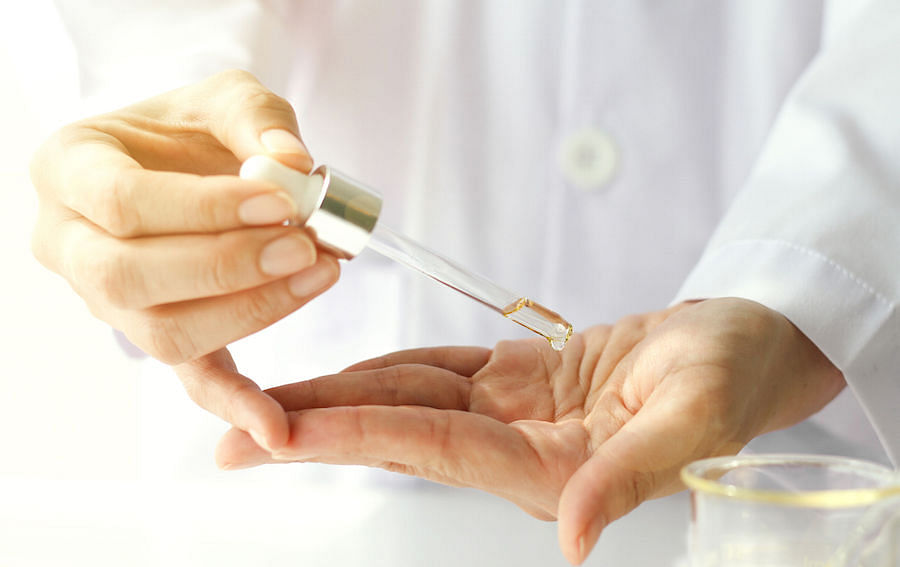
Photo: 123rf
No, you did not travel back in time to high school chemistry class – we are talking about the same pH levels you were once forced to memorise. Except this time, science actually gets fun, because that flawless skin you’ve been coveting (free from dryness, acne and irritation) boils down to correctly balancing the pH levels of your face. Turn your attention to the numbers on your skincare products and not the textbook and make beautiful skin a reality in 2018. No litmus tests required.
What exactly is pH, and why does it matter?

Photo: 123rf
Bear with us as we get slightly geeky – pH stands for ‘potential hydrogen’ and it describes the acid-alkaline ratio of a substance, from the food you eat to the creams you slather onto your skin, to even your skin itself. The natural pH level of our skin falls between 4.5 – 5.5 (with 0 being the most acidic and 14 the most alkaline). Our skin is in fact, naturally acidic, forming a natural defense mechanism known as the ‘acid mantle’. This a fine, slightly acidic film that lies on the surface of our skin acting as a barrier against foreign elements like allergens, bacteria, wind and pollutants.
So in order for our skin to maintain its healthy skin-barrier function, it needs stay at an acidic pH level. When it is too alkaline, it becomes dry and sensitive, and could potential age faster. In fact, a study done in the British Journal of Dermatology showed that women with higher alkaline levels in their skin had more fine lines, crow’s feet and were more prone to sun damage. But before you start piling on the AHAs and BHAs to make your skin more acidic, do note that if your acid levels are too high, you will be prone to angry breakouts and inflammation.
To tell what your skin’s pH value is, you can go full-on nerd and order a kit, or simply look in the mirror! If your skin looks healthy and hydrated, with no redness or flaking, then congratulations, your pH levels are perfectly balanced.
ALSO READ: Skin care tips from 10 gorgeous K-pop stars
What causes our skin’s pH levels to change?

Photo: 123rf
Factors like exposure to UV light (this is why sun protection is crucial, people), environmental pollution, climate change, washing your face in hard water (Singapore’s is soft, so don’t worry), your cleansers and even the food you eat could cause minor fluctuations in pH levels that throw that precarious balance out of whack. While our skin actually has the ability to regulate itself (otherwise you’d have skin issues every time you step out of the shower or visit a different country), there are times where the wrong skincare or prolonged exposure to environmental stresses can cause our skin’s pH to move too far away from that sweet spot and not bounce back. This is especially true as you age (your skin gets less acidic the older you get), when your body in general just isn’t as efficient at healing and regeneration as when you were in your 20s and early 30s.
So how do I balance my pH?

Photo: 123rf
There are several ways to ensure your skin is at its optimum pH levels. For starters, look at your cleansing routine. Are you using standard bar soaps to wash your face? Or is your cleanser causing your skin to feel extremely tight after each wash? If so, it is likely that it’s alkaline levels are too high. Most soaps have a pH value of 9-11, which strips skin of its natural oils, leading to dryness and causes your skin to produce more sebum to compensate, which leads to breakouts. Look out for ingredients such as sodium laurel, sulfate and citric or glycolic acid – you’ll want to avoid them. Opt for formulas that clearly list its pH values, like Allies of Skin’s Fresh Slate Brightening Cleanser + Masque or are labelled ‘pH-balanced, like Dermalogica’s Ultra Calming Cleanser. If your skin isn’t too sensitive or prone to breaking out easily, oil-based cleansers like Fresh Seaberry Skin Nutrition Cleansing Oil is a great option too.
if you live outside of Singapore and are in a country where the water is hard (meaning it has a higher mineral content of heavy metals like iron, copper, zinc), you can consider buying a water softener for your tap. This will help reduce inflammation and irritation, and even the breakdown of collagen and elastin.
Toners are also great healthy pH promoters, so if you aren’t already toning your skin as part of your regime, then you’ll want to include this step ASAP. Traditionally, toners are used to restore your skin’s pH balance after cleansing, but today’s toners have the added benefits of doing much more, such as lightening, hydrating, calming and combating excess oil, so there is no reason why you shouldn’t tone! We recommend toners such as Klairs Supple Preparation Facial Toner and Neutrogena’s Pore Refining Toner.

Photo: 123rf
If you keep up with the beauty world, you’ll know that acids (AHAs, BHAs, Retinoic etc) have been gaining traction in the recent years, from at-home peels to products loaded with vitamin C. While our skin does thrive in a more acidic environment, you’ll still want to pay close attention anytime you put an acidic product on your skin. While most over-the-counter products have been buffered to make them suitable for daily use, stop immediately if your skin becomes too dry, red or more sensitive. This could be due to a product with an acid content too high for your skin type, or that you’re applying it too often.
Speaking of, vitamin C, along with vitamins A and E are topical antioxidants that are important in maintaining the acid mantle too. For starters, the fortify skin cells and enable them to function properly and two, they protect your skin from environmental stresses and oxidation. Consider adding products like The Ordinary’s Vitamin C Suspension 23% + HA Spheres 2% to your regime, but as with all products containing vitamins C, A or E, remember to always follow up with sunblock!
Last but not least, remember that you are what you eat. When you sweat, bits of what you’ve eaten or drank gets filtered out through your skin, meaning what you’ve consumed directly impacts the acidity and alkalinity of your sweat! Avoid processed foods, baked pastries, white bread and excessive caffeine as these are highly acidic. Achieve a good balance by incorporating plenty of dark leafy veggies like kale and spinach (they are alkaline).

